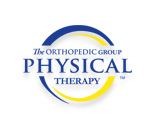Osteoporosis is a disease of the bones. It happens when you lose too much bone, make too little bone or both. As a result, bones become weak and can break from a minor fall or, in advanced cases, from simple actions, like sneezing or bumping into furniture.
About 10 million Americans have osteoporosis and approximately 34 million are at risk for the disease. Experts estimate that half of all women older than 50, and up to one in four men, will break a bone because of osteoporosis.
Breaking a bone is a serious complication of osteoporosis, especially when you’re older. Broken bones due to osteoporosis are most likely to occur in the hip, spine and wrist, but other bones can break too. Other issues caused by osteoporosis may be that you are limited in getting around easily and doing the things you enjoy. This can make you feel isolated and depressed. It can also lead to other health problems.
Some things you can do to reduce your risk are as follows: Get enough calcium and Vitamin D, eat a well balanced diet including fruits and vegetables, avoid smoking, limit alcohol to 2-3 drinks per day and engage in regular exercise.
There are two types of exercises that are important for building and maintaining bone density: weight-bearing and muscle-strengthening exercises.
Weight bearing exercises include activities that make you move against gravity while staying upright; they can be high-impact or low-impact.
•High-impact weight-bearing exercises help build bones and keep them strong. If you have broken a bone due to osteoporosis or are at risk of breaking a bone, you may need to avoid high-impact exercises. If you’re not sure, you should check with your healthcare provider.
•Low-impact weight-bearing exercises can also help keep bones strong and are a safe alternative if you cannot do high-impact exercises.
Muscle strengthening exercises include activities where you move your body, a weight or some other resistance against gravity. They are also known as resistance exercises.
Non-impact exercises can help you to improve balance, posture and how well you move in everyday activities. These exercises can also help to increase muscle strength and decrease the risk of falls and broken bones. Some of these exercises include balance exercises, posture exercises, and functional exercises. A physical therapist can teach you balance, posture and functional exercises that are specific for your needs as well as help you learn which other exercises are safe and appropriate for you.
